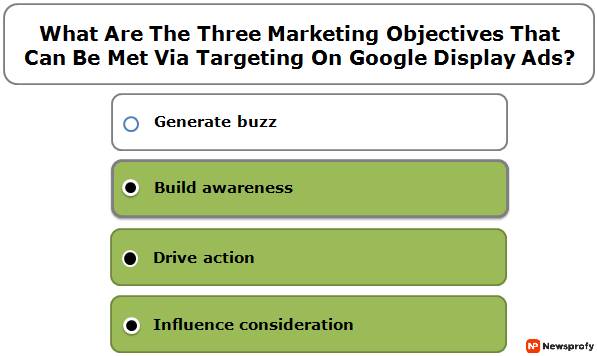How Does Google Ads Data-Driven Attribution Give Credit For Conversions?

How does Google ads data-driven attribution give credit for conversions? It is a common question that many digital marketers find themselves asking after spending some time on the web. No matter how complicated the question sounds, the answer to it is pretty simple. It depends on how engaging your ads are and how effectively they turn your audience into your customers.
Since you have got the answer to how does Google ads data-driven attribution give credit for conversion, do you think there is no need to scroll down anymore? Well, of course, there is. To grasp a decisive view of this phenomenon, you need to find out how it works and its benefits. Let’s take a look;
What Is Data-Driven Attribution?
Just think from a customer’s point of view, and you will end up grabbing every trivial detail on the importance of data-driven attribution. For example, when customers browse a product online, do they see the first product and buy it immediately? No, before they select a particular product on your website, they click on several of your ads. Of course, the credit goes to the last advertisement that made the customers interact, but is that all?
We don’t think so. So, how does Google ads data-driven attribution give credit for conversions? It depends on how well your ads can engage the customers and how effectively you can turn them into customers. The data-driven attribution of Google ads collects data from your website to decide which ads, keywords, or campaigns have been the most relevant for your site.
It looks at the website, measures the store visit number, and judges the Google analytics conversion rate from search results, display ads, and YouTube ads. After collecting data from all these potential sources will measure which campaign had the highest impact on your business goal. Ao, let’s learn more about how data-driven attribution works and what benefits it offers.
How Does Google Ads Data-Driven Attribution Give Credit For Conversions? How Does It Work?
If you compare data-driven attribution models with other attribution models, you will know how different this one is. The data-driven attribution model is unique for each digital marketer. It collects the conversion data and sums up every ad customers’ actual contribution throughout the conversion journey.
When we say a data-driven attribution model looks at all the interactions people have with your ads, we mean it. This model looks at the video engagements, search results, display ad interactions, YouTube comments, clicks, shopping intents, etc. Then, the model looks for a specific pattern among these interactions that finally leads to the conversion.
How does Google ads data-driven attribution give credit for conversions? If this question is still bothering you, let us clarify there are specific additional steps that will lead a customer to complete the conversion, but they are not applicable every time. When you evaluate the conversion data with the help of a data-driven model, you’ll see how it values the relevant ads that have the highest impact on your business objectives.
Furthermore, you can use an automated bidding strategy too, to increase your conversion rate. In this way, you will get the most critical data to help you increase the conversion.
What Are The Benefits Of Data-Driven Contribution?
How does Google ads data-driven attribution give credit for conversions? We have already given you the answer. But, do you know what the benefits of this model are? Let’s find out.
- Data-driven attribution helps you analyze which ad groups, ads, or keywords generated the most significant impact on your business.
- Based on your account’s performance, you can set the price for automated bidding and optimize the account yourself.
- You can choose the most appropriate attribution model without any guess, which will help you survive in the market for a long time.
How To Set Up The Data-Driven Attribution For Your Account?
As mentioned before, this model requires a certain amount of data to create a specific business model for your conversion attribution. So, once you figure out how does Google ads data-driven attribution give credit for conversions, it’s time you find out how to set up this model for your account.
Step 1: Use the correct credentials to sign in to your Google Ads account.
Step 2: Tap on the tools icon, and select the option named conversion.
Step 3: A table will pop up in front of you. Just select the conversion action you need to edit and tap on the edit settings option.
Step 4: Now, select the attribution model option, and a drop-down menu will appear on your screen.
Step 5: Scroll down the menu a little, and you will see the option called data-driven attribution.
Step 6: Select the done option, and press the save button.
How Does Google Ads Data-Driven Attribution Give Credit For Conversions? What Are The Data Requirements?
You already know how does Google ads data-driven attribution give credit for conversions. But, do you know what the minimum data requirements for this model to work are? Unfortunately, not every digital marketer will be able to use this model because there are specific data requirements to put into use. For example, your ads must have 3000 interactions in all your networks, and the conversion action has to have 300 interactions in the last 30 days.
Google Ads will start preparing the conversion data as soon as you cross this threshold. Once sufficient data is collected for 30 days in a row, you can see the result in Google ads. If your ads don’t have adequate data, you can also see the option to use this model.
However, you have to maintain the consistency of your ad interactions once you start using the data-driven attribution model. For example, if your ad interaction drops to 2000 in your network and 200 in the last 30 days, Google will send you an alert. If this kind of drop in your ad interactions continues for the next 30 days, your conversion will be transformed to linear.
Conclusion
How does Google ads data-driven attribution give credit for conversions? This is a common question with a complicated answer, as you might have understood by now if you have reached the end of this article. The credits indeed depend on how well you engage the customers, but you need to know the tricks too. We suggest that while using this model for the first time, you test it, see how much return it generates on your investment, and then put it to use.
Additional Reading:













